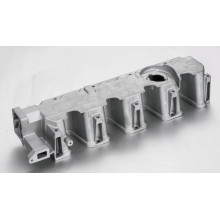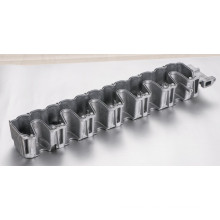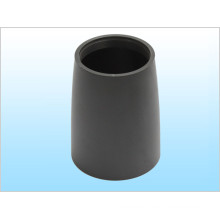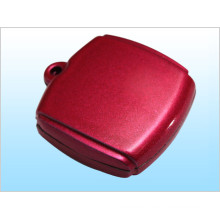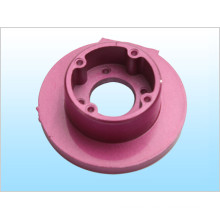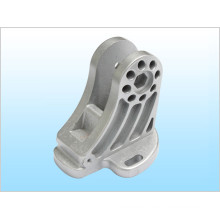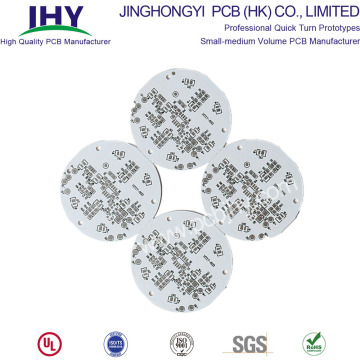PCB Aluminum Board Fabrication
Product Description
JHYPCB is an experienced PCB Aluminum Board manufacturer
JHY PCB has been producing PCB Aluminum Board (also called Metal base PCBs) for over a decade. Although originally envisioned for use in the power-supply industry these substrates are now most widely used in High Brightness LED products.
We manufactures PCB Aluminum Board with a full selection of high performance and low-cost materials from leading suppliers around the world. Aluminum PCB consists of a dielectric metal base with a bonded copper circuit layer to create superior heat transfer to help cool components while eliminating problems associated with managing fragile ceramics.
Aluminum Backed PCB can consistently increase durability and long-term reliability of a final product through temperature control and associated reductions in failure rates. Aluminum designs also deliver better mechanical stability and lower thermal expansion levels than other available materials.

Aluminum PCB Layers
Aluminum PCBs are a unique layered system comprised of the following layers.
Circuit Layer:
Printed circuit foil with thickness of 1oz to 5 oz.
Dielectric Layer:
The dielectric layer can have many different options which offer electrical isolation with minimum thermal resistance. Also used to bond the circuit layer and base material together. Each specific dielectric has its own UL recognition. See below for a listing of the different materials that we have in stock to ensure a wide variety of options with quick delivery.
Base Layer:
The base layer is most often aluminum but can also be copper. The most commonly used thickness is 0.040" (1.0mm) although many alternative thicknesses are available.
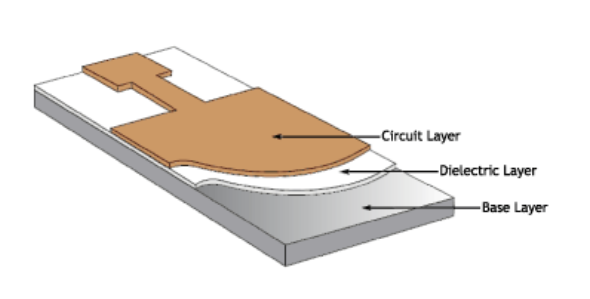
PCB Aluminum Board Layers
How are Aluminum PCB made?A thin layer of thermally conductive but electrically insulating dielectric is laminated between a metal base and a copper foil. The copper foil is etched into the desired circuit pattern and the metal base draws heat away from this circuit through the thin dielectric.
Key Requirements When Selecting an Aluminum PCB Manufacturer
For the most part, all PCB manufacturing follows the same production process regardless of where they are made. The only true differences in suppliers is the level of automation in their process, the newest technology and equipment, and having specific equipment designed to focus on certain types of end products.
For aluminum PCBs, there are several key items that a PCB manufacturer needs to consider if they are going to be able to effectively produce aluminum PCBs in any quantity, including:
Dedicated Imaging Equipment
Many of our aluminum backed PCBs go into LED applications that are much longer than the standard 18" x 24" or 20" x 24" production panels used in traditional PCB manufacturing. To be able to accurately register and economically produce these parts, a manufacturer must have either a custom piece of 60" wide UV light imaging equipment or a setup capable of screen printing (at one time) an image and then UV curing through an oven.
The old manufacturing process of screen printing half the image and then trying to hand register the first image while screen print the second half is much less effective.
Specialized Scoring Equipment
The more common equipment that can V score through traditional FR-4 materials is not suited to manage aluminum PCBs. To get the lowest cost possible, we need to get the best yield possible, which means we need to be able to place these parts as close as possible to each other on the production panel. Without V scoring, you must mechanically rout the parts out, which could result in up to 20% loss of your yield, subsequently increasing cost.
Our engineering team has many years of experience helping our customers design arrays that are the most cost effective for them to depanelize.
Greater Than 40-ton Punch Presses
For PCB Aluminum Board that are round or have unique features – (slots, large holes, cutouts, etc.) – you will want a manufacturer that can punch out these features. Trying to mechanically rout aluminum PCBs is a very costly way to get these features done in a production environment.
In-Line Hi-Pot Test
A unique requirement of aluminum PCB is that customers want to know that the product they are getting has passed a hi-pot test. While most PCB manufacturers can do this, it is usually a separate process in a lab that is not located in electrical testing. JHYPCB`s electrical test set up includes a hi-pot test, which dramatically reduces cost for the customer.
Aluminum PCB Board Applications
Although Power Converters and LEDs are the largest users of these products, Automotive and RF companies are also looking to take advantage of the benefits of these constructions. While a single layer construction is the simplest, other configuration options are available at JHYPCB, including:
One of the newest developments in IMS materials is flexible dielectrics. These materials feature a polyimide resin system with ceramic fillers which provides excellent electrical insulation, flexibility and of course thermal conductivity. When applied to a flexible aluminum material like 5754 or similar, the product can be formed to achieve a variety of shapes and angles which can eliminate costly fixtures, cables and connectors. Although these materials are flexible, they are intended to be bent into place and remain in place. They are not suited for applications that are intended to be flexed regularly.
Hybrid aluminum PCB
In a `Hybrid` IMS construction a [Sub-assembly" of a non-thermal material is processed independently and then JHYPCB Hybrid IMS PCBsbonded to the aluminum base with thermal materials. The most common construction is a 2-Layer or 4-Layer Sub-assembly made from conventional FR-4. Bonding this layer to an aluminum base with thermal dielectrics can help dissipate heat, improve rigidity and act as a shield. Other benefits include:
Multilayer Aluminum PCB
Common in the high performance power supply market, multilayer IMS PCBs are made from multiple layers of thermally conductive dielectrics. These constructions have one or more layers of circuitry buried in the dielectric with blind vias acting as either thermal vias or signal vias. While more expensive and less efficient at transferring heat as a single layer designs, they provide a simple and effective solution for heat dissipation in more complex designs.
Through-Hole Aluminum PCB
In the most complex constructions a layer of aluminum can form a `Core` of a multilayer thermal construction. The aluminum is pre-drilled and back-filled with dielectric prior to lamination. Thermal materials or sub-assemblies can be laminated to both sides of the aluminum using thermal bonding materials. Once laminated, the completed assembly is thru-drilled similar to a conventional multilayer PCB. The plated through holes pass through the clearances in the aluminum to maintain electrical insulation. Alternatively a Copper core can allow both direct electrical connections as well as with insulated through holes.
You can improve the durability and performance of your product by using aluminum boards. Simple designs and low thermal impedance of the dielectric out performs all other printed circuit board insulators for power and high-operating temperature components. The relatively low cost versus copper and the ability to have a lightweight material with excellent durability are the biggest reasons aluminum is used for these applications.
Below are some examples of applications using aluminum backed PCBs.
Power Conversion
Aluminum clad offers a variety of thermal performances, is compatible with mechanical fasteners, and is highly reliable.
LED Circuit Boards
Using aluminum with your LEB PCB ensures the lowest possible operating temperatures and maximum brightness, color, and life. With many low-cost options for dielectric materials and specific manufacturing equipment dedicated to single sided production of LED lighting products, we can give our customers the best overall solution.
Motor Drives
Thermal clad dielectric choices provide the electrical isolation needed to meet operating parameters and safety agency test requirements.
Solid State Relays
Aluminum offers a very thermally efficient and mechanically robust substrate to drive heat away from the critical system components.
Automotive
The automotive industry uses aluminum boards, as they need long term reliability under high operating temperatures coupled with their requirement of effective space utilization. Most commonly used in automotive lighting system components.
Consumer Products
Most commonly found in street lighting, traffic control lighting, interior building lights, landscape lighting, and camping gear as aluminum PCBs are lightweight and can be very small in size.
Product Categories : Aluminum PCB
